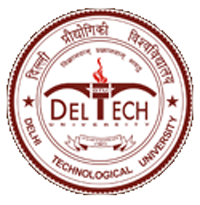Please use this identifier to cite or link to this item:
http://dspace.dtu.ac.in:8080/jspui/handle/repository/21787| Title: | LIGHTWEIGHT NETWORKS FOR LOW-LIGHT IMAGE ENHANCEMENT BASED ON MULTI-OBJECTIVE KNOWLEDGE DISTILLATION |
| Authors: | NARSHIHBHAI, JOSHI KULADIPKUMAR |
| Keywords: | LIGHTWEIGHT NETWORKS LOW-LIGHT IMAGE ENHANCEMENT KNOWLEDGE DISTILLATION |
| Issue Date: | May-2025 |
| Series/Report no.: | TD-7998; |
| Abstract: | Low-light image enhancement is a critical computer vision challenge impacting visual quality and downstream tasks. While large deep learning models like MIRNet-v2 excel at restoring details and colors, their computational and memory demands hinder real-time or edge device deployment. Conversely, lightweight models such as Zero-DCE efficiently adjust illumination but may lack fine texture or structural recovery. This thesis introduces a novel framework for computationally efficient, high performing lightweight networks for low-light image enhancement using pro gressive multi-teacher knowledge distillation. We leverage the complementary expertise of MIRNet-v2 (˜26.6M parameters) for structural preservation and Zero DCE (˜0.1M parameters) for efficient illumination correction, training a compact student network to learn from both. Key innovations include: 1. Resolution-Progressive Training: The student network trains over 250 epochs, starting with 64x64 pixel images and progressively increasing resolution (to 128x128, then 256x256). This curriculum learning, with dynamic batch siz ing, ensures stable optimization and manages GPU memory. 2. Multi-Objective Hybrid Loss: A weighted 7-component loss guides stu dent learning, incorporating Charbonnier loss (Lrecon) for reconstruction, FFT-based L1 loss (Lfreq) for frequency fidelity, VGG perceptual loss (Lperc), MS-SSIM loss (Lmsssim) for structure, Sobel gradient L1 loss (Lgrad) for edges, a PatchGAN adversarial loss (Ladv-G), and contrastive distillation loss (Lcont) to mimic teacher features. 3. Lightweight Enhanced Student Architecture: The 9.99M parameter stu dent generator uses an efficient backbone of Recursive Residual Groups (RRGs) and Multi-scale Residual Blocks (MRBs). Optional Adaptive Fea ture Stretch (AFS) blocks for dynamic feature range expansion and Gradient Guided Convolution (GGC) blocks for edge awareness further augment its representational power. Experiments on the standard LOL (Low-Light) dataset show our model achiev ing a PSNR of 21.89 dB and an SSIM of 0.858. With total training parameters (including discriminator) of 23.6M, our approach significantly balances perfor mance and computational efficiency, offering a promising solution for deploying high-quality low-light enhancement in practical, resource-aware scenarios. |
| URI: | http://dspace.dtu.ac.in:8080/jspui/handle/repository/21787 |
| Appears in Collections: | M.E./M.Tech. Computer Engineering |
Files in This Item:
| File | Description | Size | Format | |
|---|---|---|---|---|
| JOSHI KULADIPKUMAR NARSHIHBHAI M.Tech.pdf | 3.26 MB | Adobe PDF | View/Open |
Items in DSpace are protected by copyright, with all rights reserved, unless otherwise indicated.



